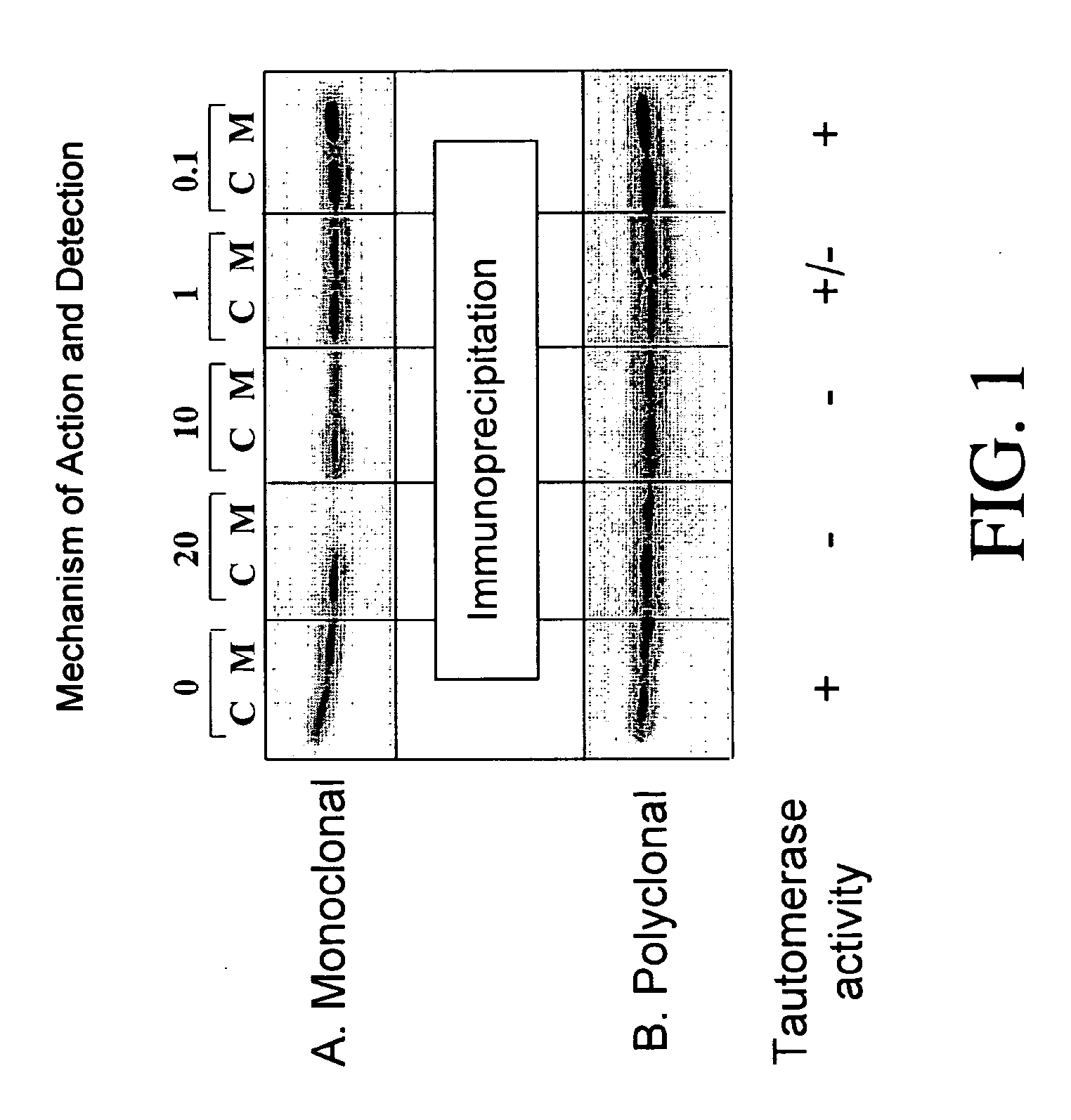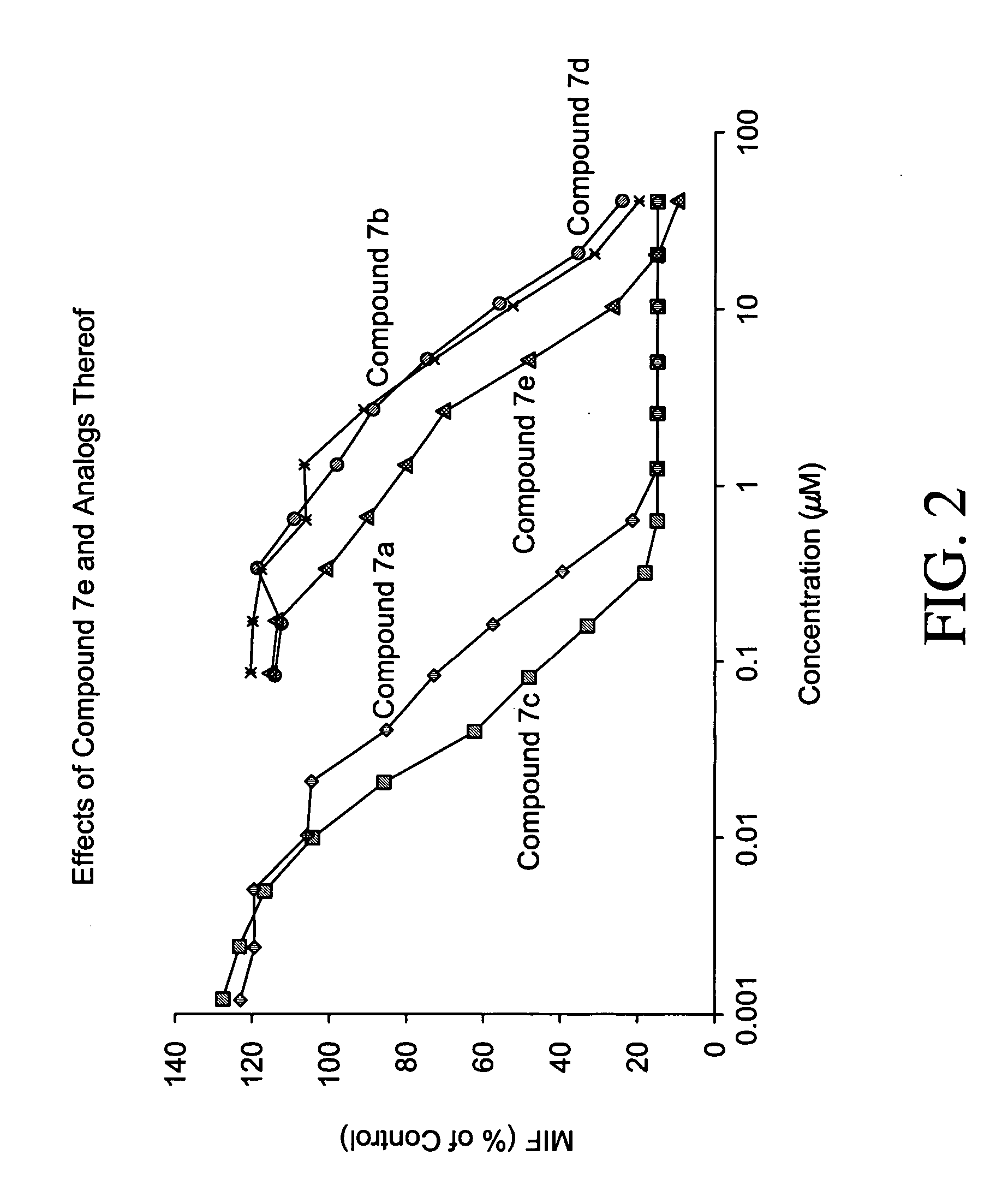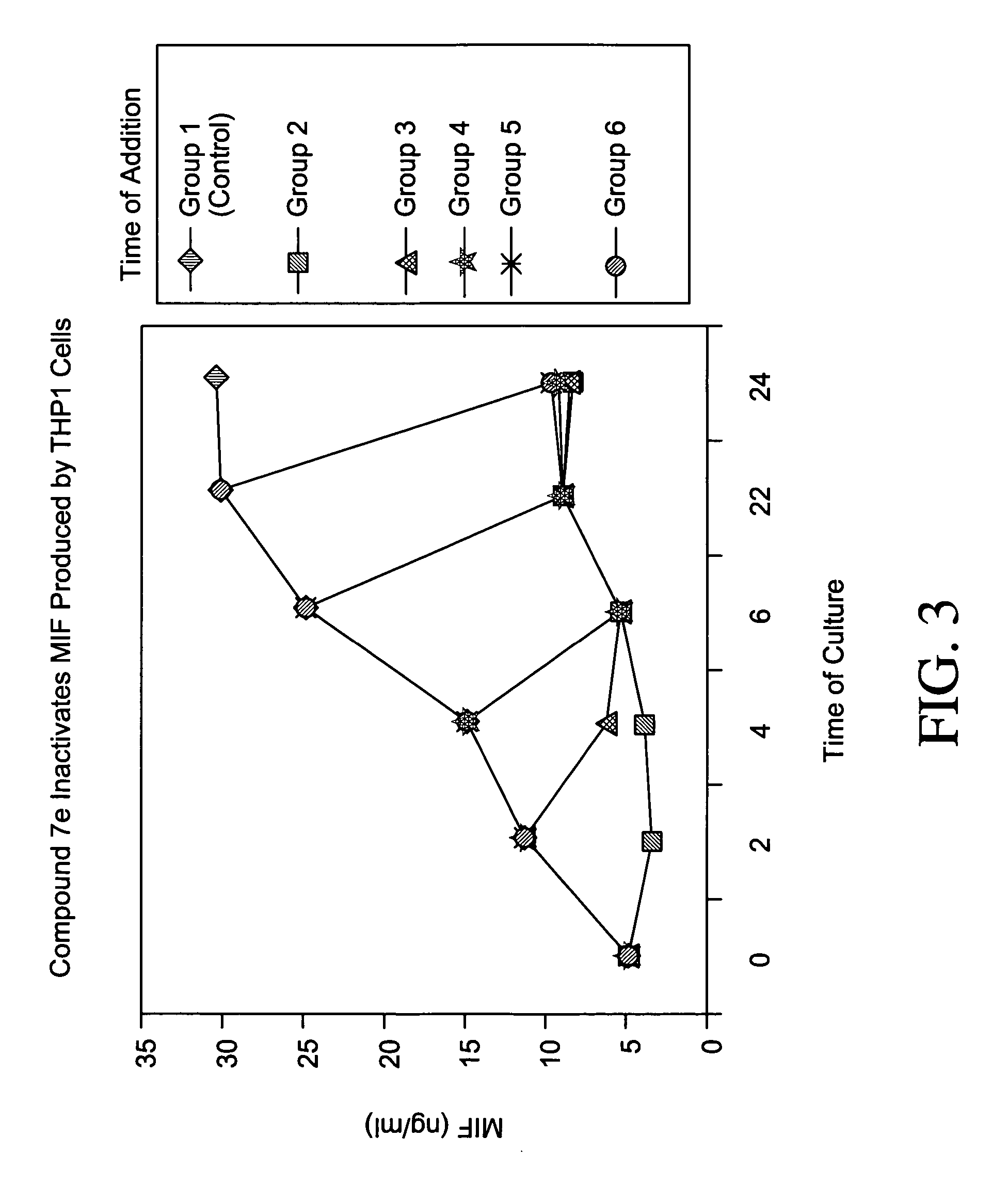Inhibitors of macrophage migration inhibitory factor and methods for identifying the same
a macrophage migration and inhibitory factor technology, applied in the field of inhibitors of macrophage migration inhibitory factor and methods for identifying the same, can solve the problems of limited ability to evaluate the inhibition of mif to its cell surface receptor, significant toxicity, and inability to identify inhibitors that act intracellularly
- Summary
- Abstract
- Description
- Claims
- Application Information
AI Technical Summary
Benefits of technology
Problems solved by technology
Method used
Image
Examples
example 1
[0199]
[0200] A solution of ethyl nitroacetate (6.70 ml, 60.1 mmol) in N,N-dimethylacetamide (35 ml) was treated with 95% NaH (1.52 g, 60.2 mmol) in portions. After evolution of hydrogen ceased, the reaction mixture was heated at 80° C. for 15 minutes. A solution of N-methylisatoic anhydride 1 (11.1 g, 62.5 mmol) in N,N-dimethylacetamide (65 ml) was added over a period of 15 minutes after which the reaction was heated at 120° C. for 18 hours. The solvent was removed by distillation, the residue dissolved in water, and acidified with 6 N HCl. The ensuing precipitate was collected and washed with water. Recrystallization of the remaining residue from CH2Cl2 / ether gave quinolinone 2a (5.75 g, 43%) as a yellow solid.
[0201] A solution of diethyl malonate (18.8 ml, 111 mmol) in N,N-dimethylacetamide (35 ml) was treated with 95% NaH (2.80 g, 111 mmol) in portions. After evolution of hydrogen ceased, the reaction mixture was heated at 80° C. for 15 minutes. A solution of N-methylisatoic an...
example 2
[0210] Macrophage Migration Assay
[0211] Macrophage migration is measured by using the agarose droplet assay and capillary method as described by Harrington and Stastny et al., J. Immunol. 110(3):752-759, 1973. Briefly, macrophage-containing samples are added to hematocrit tubes, 75 mm long with a 1.2 mm inner diameter. The tubes are heat sealed and centrifuged at 100×G for 3 minutes, cut at the cell-fluid interface and imbedded in a drop of silicone grease in Sykes-Moore culture chambers. The culture chambers contain either a control protein (BSA) or samples. Migration areas are determined after 24 and 48 hours of incubation at 37° C. by tracing a projected image of the macrophage fans and measuring the areas of the migration by planimetry.
[0212] Alternatively, each well of a 96-well plate is pre-coated with one microliter of liquid 0.8% (w / v) Sea Plaque Agarose in water dispensed onto the middle of each well. The plate is then warmed gently on a light box until the agarose drops ...
example 3
[0215] Tautomerase Assay
[0216] The tautomerization reaction is carried out essentially as described by Rosengren et al., Mol. Med. 2(1):143-149, 1996. D-dopachrome conversion to 5,6-dihydroxyindole-2-carboxylic acid is assessed. 1 ml sample cuvettes containing 0.42 mM substrate and 1.4 μg of MIF in a sample solution containing 0.1 mM EDTA and 10 mM sodium phosphate buffer, pH 6.0 are prepared and the rate of decrease in iminochrome absorbance is followed at 475 nm. L-dopachrome is employed as a control. In addition, the reaction products can be followed using an HPLC, utilizing a mobile phase including 20 mM KH2PO4 buffer (pH 4.0) and 15% methanol with a flow rate of 1.2 ml / min. Fluorimetric detection is followed at 295 / 345 nm.
[0217] Alternatively, the tautomerization reaction utilizing phenylpyruvate or (p-hydroxyphenyl)pyruvate is carried out essentially as described by Johnson et al., Biochem. 38:16024-16033, 1999. In this version, ketonization of phenylpyruvate is monitored at...
PUM
| Property | Measurement | Unit |
|---|---|---|
| molecular mass | aaaaa | aaaaa |
| time | aaaaa | aaaaa |
| time | aaaaa | aaaaa |
Abstract
Description
Claims
Application Information
 Login to View More
Login to View More - R&D
- Intellectual Property
- Life Sciences
- Materials
- Tech Scout
- Unparalleled Data Quality
- Higher Quality Content
- 60% Fewer Hallucinations
Browse by: Latest US Patents, China's latest patents, Technical Efficacy Thesaurus, Application Domain, Technology Topic, Popular Technical Reports.
© 2025 PatSnap. All rights reserved.Legal|Privacy policy|Modern Slavery Act Transparency Statement|Sitemap|About US| Contact US: help@patsnap.com



